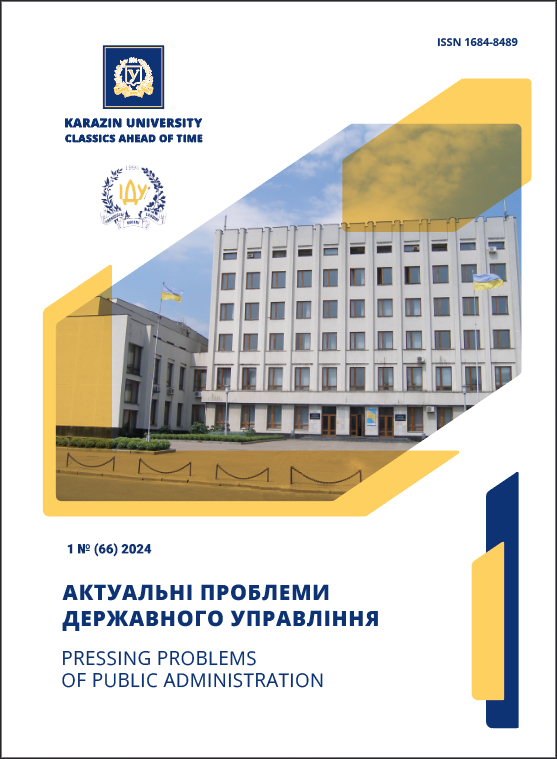Digital adaptability of the social protection system under military aggression: has the path from imbalance to institutional resilience been traversed?
Abstract
This article provides a comprehensive analysis of the «crisis digitalization paradox» phenomenon – a unique occurrence where extreme conditions of full-scale Russian military aggression became a catalyst for revolutionary transformation of Ukraine’s social protection system through digital innovations. The research is based on an innovative theoretical prism triangulation approach, where the Ukrainian experience is analyzed through complementary conceptual lenses: adaptive governance theory, resilience theory, and antifragility theory. The central proposition demonstrates how a system traditionally most inertial and resistant to change achieved a level of digital integration within two years of wartime that would have required decades of gradual transformation under normal circumstances. The study analyzes the dramatic leap from 102nd to 5th place in the UN global digital governance ranking, the evolution of the Diia platform from 13 to 22+ million users with over 140 digital services, and the establishment of 218 Resilience Centers. Key findings include the conceptualization of a new theoretical framework for «adaptive governance under global instability,» which postulates that the effectiveness of «shock modernization» depends on the synergy of institutional adaptive capacity, system resilience potential, and antifragile design. The research demonstrates that the «shock modernization» phenomenon is not a uniquely Ukrainian occurrence but a potentially universal pattern. Addressing the central question of overcoming the path from imbalance to institutional resilience, the study reveals the dialectical nature of transformation: Ukraine achieved functional resilience of the social protection system through digital adaptability but has not completed the structural institutionalization of achievements. The system remains in a transitional state between crisis response and sustainable development, highlighting the criticality of transitioning from «crisis exceptions» to «new normality».
Downloads
References
Zavhorodnia, S. (2025). Strengthening population resilience to risks for energy resource accessibility. NISS. Kyiv. URL: https://niss.gov.ua/doslidzhennya/sotsialna-polityka/zmitsnennya-stiykosti-naselennya-do-ryzykiv-dlya-dostupnosti [in Ukrainian].
Koval, O. (2024). Updating human development strategy: Aspect of war refugee repatriation. NISS. Kyiv. URL: https://www.niss.gov.ua/news/komentari-ekspertiv/onovlennya-stratehiyi-lyudskoho-rozvytku-aspekt-repatriatsiyi-bizhentsiv [in Ukrainian].
Melnyk, T. (2024). Security Service of Ukraine repelled over 9,000 cyberattacks during two years of full-scale war. Forbes Ukraine. URL: https://forbes.ua/news/sbu-vidbila-ponad-9000-kiberatak-za-dva-roki-povnomasshtabnoi-viyni-05032024-19667 [in Ukrainian]
Ministry of Economy of Ukraine. (n.d.). Results of «Winter Support»: 14.4 million Ukrainians used the program. URL: https://me.gov.ua/News/Detail/818b0972-9c25-4e2f-9e8c-35995c77fcf1?lang=uk-UA&title=Rezultatizimovoipidtrimki-14-4-MlnUkraintsivSkoristalisiaProgramoiu [in Ukrainian]
Reznikova, O.O. (2022). National resilience in conditions of changing security environment: Monograph. NISS. URL: https://niss.gov.ua/publikatsiyi/monohrafiyi/natsionalna-stiykist-v-umovakh-minlyvoho-bezpekovoho-seredovyshcha [in Ukrainian]
Atlantic Council. (2024). Ukraine’s Diia platform sets the global gold standard for e-government. URL: https://www.atlanticcouncil.org/blogs/ukrainealert/ukraines-diia-platform-sets-the-global-gold-standard-for-e-government/
Harvard ALI Social Impact Review. (2024). Digital Transformation in Ukraine: Before, During, and After the War. URL: https://www.sir.advancedleadership.harvard.edu/articles/digital-transformation-in-ukraine-before-during-after-war
McKinsey & Company. (2020). How COVID-19 has pushed companies over the technology tipping point. URL: https://www.mckinsey.com/capabilities/strategy-and-corporate-finance/our-insights/how-covid-19-has-pushed-companies-over-the-technology-tipping-point-and-transformed-business-forever
World Economic Forum. (2020). How Estonia’s digital society became a lifeline during COVID-19. URL: https://www.weforum.org/stories/2020/07/estonia-advanced-digital-society-here-s-how-that-helped-it-during-covid-19/
Mamediieva, G. (2025). Ukraine’s Digital Transformation: Innovation for Resilience. Harvard. URL: https://www.hks.harvard.edu/centers/cid/voices/ukraines-digital-transformation-innovation-resilience
Nielsen, M.M., & Jordanoski, Z. (2022). Digital Transformation, Governance, and Coordination in Times of Crisis: An Analysis of Australia, Denmark, and the Republic of Korea. Digital Government: Research and Practice, 4(4), 1–20. DOI: https://doi.org/10.1145/3604569
European Commission. (n.d.). Recovery and Resilience Scoreboard. URL: https://ec.europa.eu/economy_finance/recovery-and-resilience-scoreboard/index.html?lang=en
Taleb, N.N. (2012). Antifragile: Things That Gain from Disorder. Random House.
Wu, W., & Wang, H. (2023). How firms cope with social crisis: The mediating role of digital transformation as a strategic response to the COVID-19 pandemic. PLOS One. DOI: https://doi.org/10.1371/journal.pone.0282854
Copyright (c) 2025 Pressing Problems of Public Administration

This work is licensed under a Creative Commons Attribution 4.0 International License.

